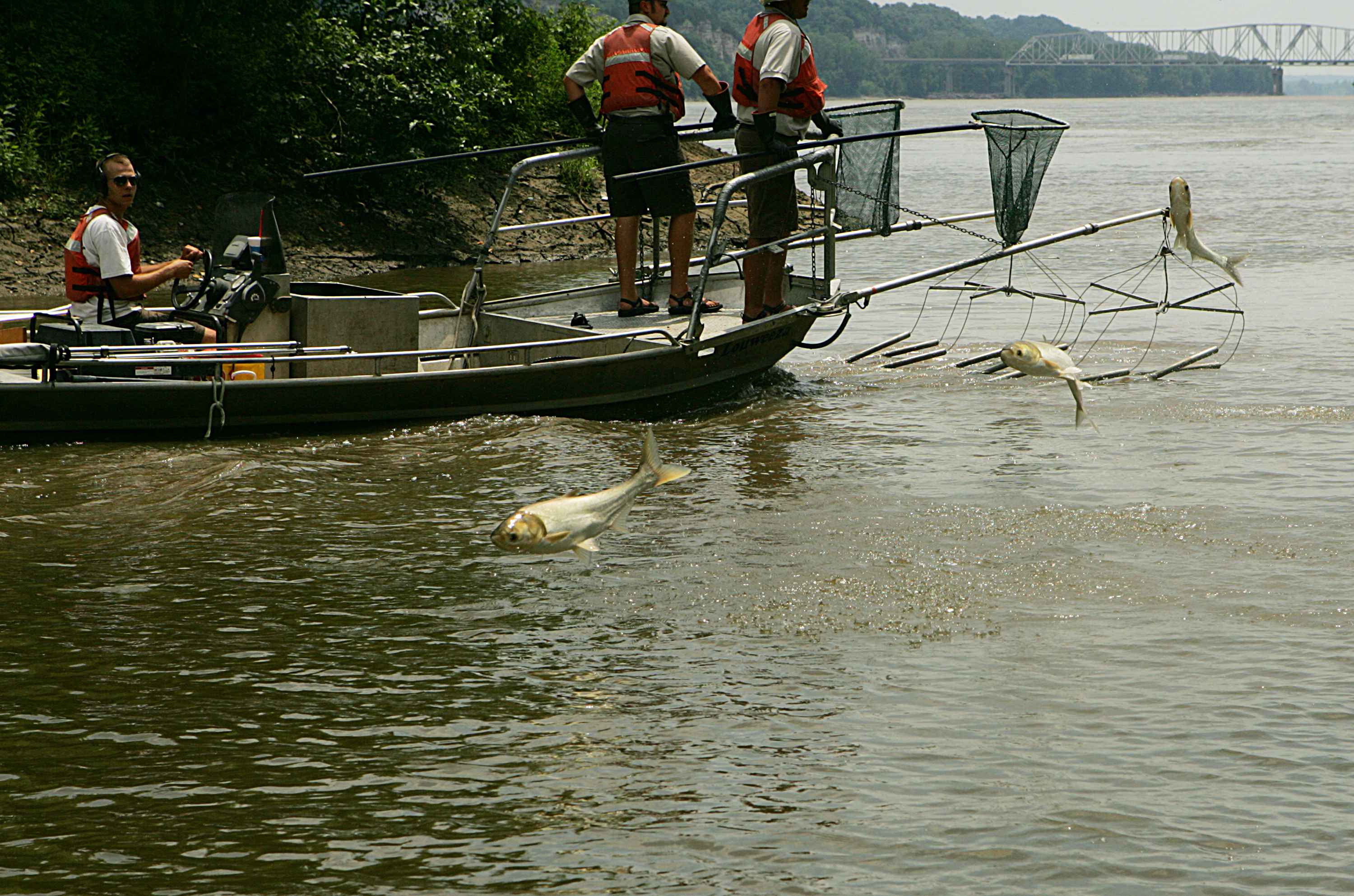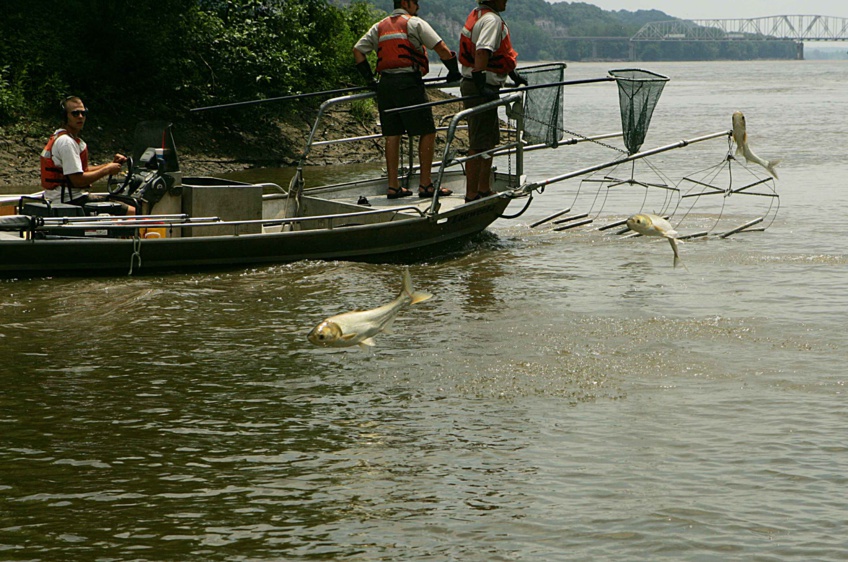Tetra Tech was hired by the IDNR to lead a major initiative to give Asian carp a new, fresh name in order to encourage people to eat them in order to support their removal from midwestern waterways. Invasive Asian carp reproduce at an alarming rate and outcompete native fish for resources, disrupting the ecological balance of the Midwest's freshwater rivers and lakes. In many areas, their population is staggering. In some areas of the Illinois River, for example, invasive Asian carp account for up to 70% of the biomass.
“Harvesting Asian carp for consumer consumption is proving to be one of the most effective strategies to address the ecological threat posed by these invasive fish while also supporting the local economy.”
Ecological threat
Name changes have previously been shown to increase consumer interest in a variety of food products, including the fish now known as Mahi-mahi, orange roughy, and Chilean sea bass. Tetra Tech led a design and marketing team under the direction of the IDNR to conduct consumer research to develop a new name for Asian carp and highlight the fresh, clean, healthy, and delicious qualities of these fish.
“This approach puts market demand to work and directly engages consumers to help solve a dire ecological problem,” said Gina Behnfeldt, vice president of our northeastern U.S. economic development services and Tetra Tech project manager for the marketing initiative.
“Where public dollars are limited, using consumer demand can provide tremendous resources to address this challenge. And these fish are not a hard sell. They are light and clean-tasting, great sources of protein, and responsibly sourced—all qualities that resonate well with consumers today.”
Harvesting is proving to be one of the most effective strategies for reducing invasive Asian carp populations in midwestern waterways thus far. Creating a new, robust market for them is a novel solution that addresses the ecological threat posed by these fish while also benefiting the local midwestern US economy. Increased consumption of these fish may aid in the restoration and protection of native walleye, perch, lake trout, and other fish populations. It can also support local small-scale fisheries, restaurants, and other businesses that have been severely impacted by the COVID-19 pandemic.
In June, Illinois officially announced the new name for Asian carp as Copi, derived from the word copious, to emphasize the numerous nutritional and ecological benefits of eating these fish.
“Tetra Tech was a great manager for our project to consider how best to handle a complex problem of reducing these invasive fish populations,” said Kevin Irons, assistant fisheries chief for the IDNR.
“To bring economic expertise to such a natural resource issue provided for the very best solutions with solid economic and biological underpinnings to benefit Illinois natural resources. Such collaborations across fields should occur more often to the benefit of all our programs.”
For more than a decade, Tetra Tech has collaborated with the IDNR to manage and monitor invasive Asian carp populations in Illinois waters, as well as develop action plans to prevent their spread into the Great Lakes ecosystem.
To reduce the number of carp that could migrate upstream into the Great Lakes, the IDNR has relied heavily on commercial fishermen.
Tetra Tech is continuing to support supply chain efforts and hopes to expand Copi distribution to establishments throughout the United States.
“We plan to increase harvesting efforts by hiring more local fishers,” said Gina. “Having already removed more than 10 million pounds of Asian carp from midwestern U.S. waters, we aim to remove 20 million pounds of them by 2025. Copi on the plate is a great tool to accomplish this management.”
“As beef is to the cattle industry, Copi is to Asian carp fishery,” said Kevin. “It gives the fillet a name that is well-received and delicious!”
“Harvesting Asian carp for consumer consumption is proving to be one of the most effective strategies to address the ecological threat posed by these invasive fish while also supporting the local economy.”
Ecological threat
Name changes have previously been shown to increase consumer interest in a variety of food products, including the fish now known as Mahi-mahi, orange roughy, and Chilean sea bass. Tetra Tech led a design and marketing team under the direction of the IDNR to conduct consumer research to develop a new name for Asian carp and highlight the fresh, clean, healthy, and delicious qualities of these fish.
“This approach puts market demand to work and directly engages consumers to help solve a dire ecological problem,” said Gina Behnfeldt, vice president of our northeastern U.S. economic development services and Tetra Tech project manager for the marketing initiative.
“Where public dollars are limited, using consumer demand can provide tremendous resources to address this challenge. And these fish are not a hard sell. They are light and clean-tasting, great sources of protein, and responsibly sourced—all qualities that resonate well with consumers today.”
Harvesting is proving to be one of the most effective strategies for reducing invasive Asian carp populations in midwestern waterways thus far. Creating a new, robust market for them is a novel solution that addresses the ecological threat posed by these fish while also benefiting the local midwestern US economy. Increased consumption of these fish may aid in the restoration and protection of native walleye, perch, lake trout, and other fish populations. It can also support local small-scale fisheries, restaurants, and other businesses that have been severely impacted by the COVID-19 pandemic.
In June, Illinois officially announced the new name for Asian carp as Copi, derived from the word copious, to emphasize the numerous nutritional and ecological benefits of eating these fish.
“Tetra Tech was a great manager for our project to consider how best to handle a complex problem of reducing these invasive fish populations,” said Kevin Irons, assistant fisheries chief for the IDNR.
“To bring economic expertise to such a natural resource issue provided for the very best solutions with solid economic and biological underpinnings to benefit Illinois natural resources. Such collaborations across fields should occur more often to the benefit of all our programs.”
For more than a decade, Tetra Tech has collaborated with the IDNR to manage and monitor invasive Asian carp populations in Illinois waters, as well as develop action plans to prevent their spread into the Great Lakes ecosystem.
To reduce the number of carp that could migrate upstream into the Great Lakes, the IDNR has relied heavily on commercial fishermen.
Tetra Tech is continuing to support supply chain efforts and hopes to expand Copi distribution to establishments throughout the United States.
“We plan to increase harvesting efforts by hiring more local fishers,” said Gina. “Having already removed more than 10 million pounds of Asian carp from midwestern U.S. waters, we aim to remove 20 million pounds of them by 2025. Copi on the plate is a great tool to accomplish this management.”
“As beef is to the cattle industry, Copi is to Asian carp fishery,” said Kevin. “It gives the fillet a name that is well-received and delicious!”


 Supporting native fish in midwestern waterways
Supporting native fish in midwestern waterways





 Companies
Companies